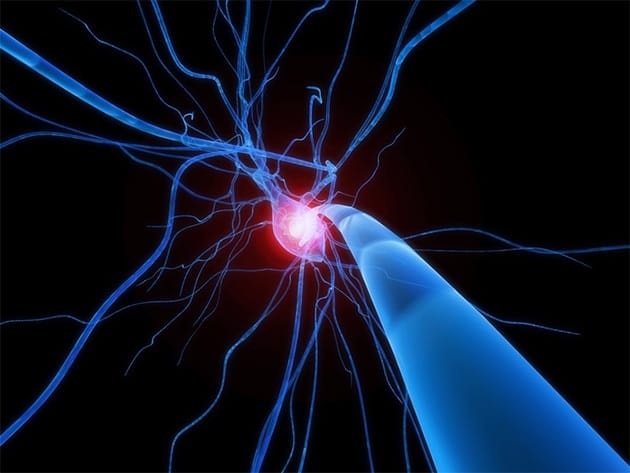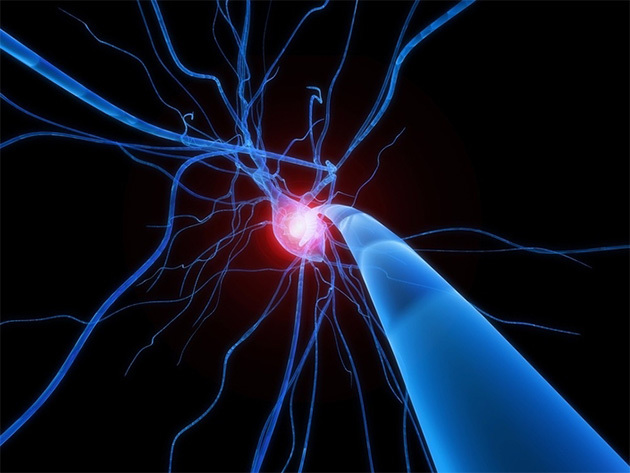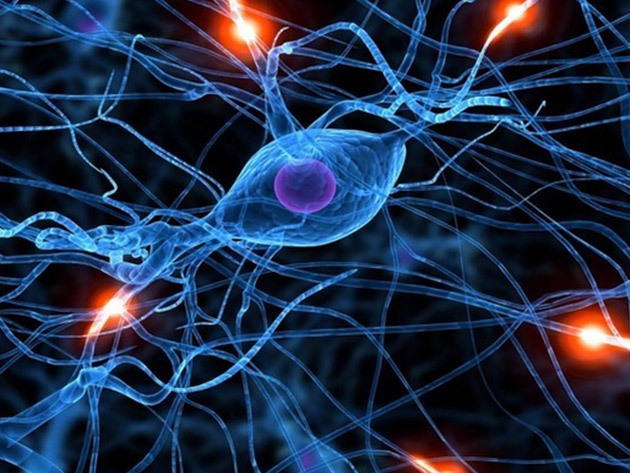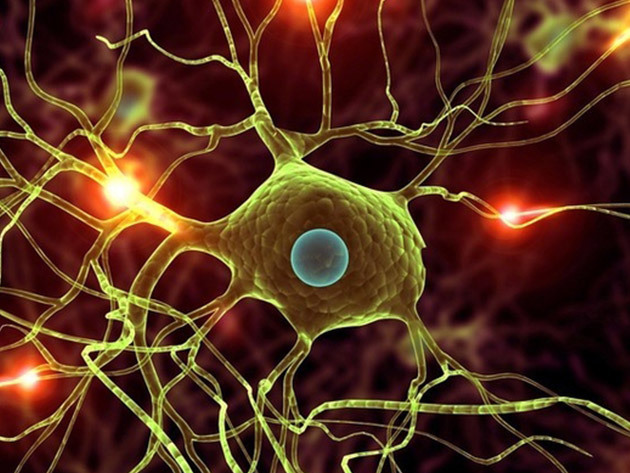Tag Archive: Introductory
December 3, 2016 / by Marco / Artificial, Bundle, Business', deals, Deep, design, entrepreneur, intelligence, Introductory, Learning, website

The Deep Learning and Artificial Intelligence Introductory Bundle for $39

KEY FEATURES
Deep Learning is a set of powerful algorithms that are the force behind self-driving cars, image searching, voice recognition, and many, many more applications we consider decidedly “futuristic.” One of the central foundations of deep learning is linear regression; using probability theory to gain deeper insight into the “line of best fit.” This is the first step to building machines that, in effect, act like neurons in a neural network as they learn while they’re fed more information. In this course, you’ll start with the basics of building a linear regression module in Python, and progress into practical machine learning issues that will provide the foundations for an exploration of Deep Learning.
- Access 20 lectures & 2 hours of content 24/7
- Use a 1-D linear regression to prove Moore’s Law
- Learn how to create a machine learning model that can learn from multiple inputs
- Apply multi-dimensional linear regression to predict a patient’s systolic blood pressure given their age & weight
- Discuss generalization, overfitting, train-test splits, & other issues that may arise while performing data analysis
Like what you’re learning? Try out the The Advanced Guide to Deep Learning and Artificial Intelligence next.
PRODUCT SPECS
Details & Requirements
- Length of time users can access this course: lifetime
- Access options: web streaming, mobile streaming
- Certification of completion not included
- Redemption deadline: redeem your code within 30 days of purchase
- Experience level required: all levels, but you must have some knowledge of calculus, linear algebra, probability, Python, and Numpy
- All code for this course is available for download here, in the directory linear_regression_class
Compatibility
- Internet required
THE EXPERT
The Lazy Programmer is a data scientist, big data engineer, and full stack software engineer. For his master’s thesis he worked on brain-computer interfaces using machine learning. These assist non-verbal and non-mobile persons to communicate with their family and caregivers.
He has worked in online advertising and digital media as both a data scientist and big data engineer, and built various high-throughput web services around said data. He has created new big data pipelines using Hadoop/Pig/MapReduce, and created machine learning models to predict click-through rate, news feed recommender systems using linear regression, Bayesian Bandits, and collaborative filtering and validated the results using A/B testing.
He has taught undergraduate and graduate students in data science, statistics, machine learning, algorithms, calculus, computer graphics, and physics for students attending universities such as Columbia University, NYU, Humber College, and The New School.
Multiple businesses have benefitted from his web programming expertise. He does all the backend (server), frontend (HTML/JS/CSS), and operations/deployment work. Some of the technologies he has used are: Python, Ruby/Rails, PHP, Bootstrap, jQuery (Javascript), Backbone, and Angular. For storage/databases he has used MySQL, Postgres, Redis, MongoDB, and more.

KEY FEATURES
Logistic regression is one of the most fundamental techniques used in machine learning, data science, and statistics, as it may be used to create a classification or labeling algorithm that quite resembles a biological neuron. Logistic regression units, by extension, are the basic bricks in the neural network, the central architecture in deep learning. In this course, you’ll come to terms with logistic regression using practical, real-world examples to fully appreciate the vast applications of Deep Learning.
- Access 31 lectures & 3 hours of content 24/7
- Code your own logistic regression module in Python
- Complete a course project that predicts user actions on a website given user data
- Use Deep Learning for facial expression recognition
- Understand how to make data-driven decisions
Like what you’re learning? Try out the The Advanced Guide to Deep Learning and Artificial Intelligence next.
PRODUCT SPECS
Details & Requirements
- Length of time users can access this course: lifetime
- Access options: web streaming, mobile streaming
- Certification of completion not included
- Redemption deadline: redeem your code within 30 days of purchase
- Experience level required: all levels, but you must have some knowledge of calculus, linear algebra, probability, Python, and Numpy
- All code for this course is available for download here, in the directory logistic_regression_class
Compatibility
- Internet required
THE EXPERT
The Lazy Programmer is a data scientist, big data engineer, and full stack software engineer. For his master’s thesis he worked on brain-computer interfaces using machine learning. These assist non-verbal and non-mobile persons to communicate with their family and caregivers.
He has worked in online advertising and digital media as both a data scientist and big data engineer, and built various high-throughput web services around said data. He has created new big data pipelines using Hadoop/Pig/MapReduce, and created machine learning models to predict click-through rate, news feed recommender systems using linear regression, Bayesian Bandits, and collaborative filtering and validated the results using A/B testing.
He has taught undergraduate and graduate students in data science, statistics, machine learning, algorithms, calculus, computer graphics, and physics for students attending universities such as Columbia University, NYU, Humber College, and The New School.
Multiple businesses have benefitted from his web programming expertise. He does all the backend (server), frontend (HTML/JS/CSS), and operations/deployment work. Some of the technologies he has used are: Python, Ruby/Rails, PHP, Bootstrap, jQuery (Javascript), Backbone, and Angular. For storage/databases he has used MySQL, Postgres, Redis, MongoDB, and more.

KEY FEATURES
Artificial neural networks are the architecture that make Apple’s Siri recognize your voice, Tesla’s self-driving cars know where to turn, Google Translate learn new languages, and so many more technological features you have quite possibly taken for granted. The data science that unites all of them is Deep Learning. In this course, you’ll build your very first neural network, going beyond basic models to build networks that automatically learn features.
- Access 37 lectures & 4 hours of content 24/7
- Extend the binary classification model to multiple classes uing the softmax function
- Code the important training method, backpropagation, in Numpy
- Implement a neural network using Google’s TensorFlow library
- Predict user actions on a website given user data using a neural network
- Use Deep Learning for facial expression recognition
- Learn some of the newest development in neural networks
Like what you’re learning? Try out the The Advanced Guide to Deep Learning and Artificial Intelligence next.
PRODUCT SPECS
Details & Requirements
- Length of time users can access this course: lifetime
- Access options: web streaming, mobile streaming
- Certification of completion not included
- Redemption deadline: redeem your code within 30 days of purchase
- Experience level required: intermediate, but you must have some knowledge of calculus, linear algebra, probability, Python, and Numpy
- All code for this course is available for download here, in the directory ann_class
Compatibility
- Internet required
THE EXPERT
The Lazy Programmer is a data scientist, big data engineer, and full stack software engineer. For his master’s thesis he worked on brain-computer interfaces using machine learning. These assist non-verbal and non-mobile persons to communicate with their family and caregivers.
He has worked in online advertising and digital media as both a data scientist and big data engineer, and built various high-throughput web services around said data. He has created new big data pipelines using Hadoop/Pig/MapReduce, and created machine learning models to predict click-through rate, news feed recommender systems using linear regression, Bayesian Bandits, and collaborative filtering and validated the results using A/B testing.
He has taught undergraduate and graduate students in data science, statistics, machine learning, algorithms, calculus, computer graphics, and physics for students attending universities such as Columbia University, NYU, Humber College, and The New School.
Multiple businesses have benefitted from his web programming expertise. He does all the backend (server), frontend (HTML/JS/CSS), and operations/deployment work. Some of the technologies he has used are: Python, Ruby/Rails, PHP, Bootstrap, jQuery (Javascript), Backbone, and Angular. For storage/databases he has used MySQL, Postgres, Redis, MongoDB, and more.

KEY FEATURES
The applications of Deep Learning are many, and constantly growing, just like the neural networks that it supports. In this course, you’ll delve into advanced concepts of Deep Learning, starting with the basics of TensorFlow and Theano, understanding how to build neural networks with these popular tools. Using these tools, you’ll learn how to build and understand a neural network, knowing exactly how to visualize what is happening within a model as it learns.
- Access 23 lectures & 3 hours of programming 24/7
- Discover batch & stochastic gradient descent, two techniques that allow you to train on a small sample of data at each iteration, greatly speeding up training time
- Discuss how momentum can carry you through local minima
- Learn adaptive learning rate techniques like AdaGrad & RMSprop
- Explore dropout regularization & other modern neural network techniques
- Understand the variables & expressions of TensorFlow & Theano
- Set up a GPU-instance on AWS & compare the speed of CPU vs GPU for training a deep neural network
- Look at the MNIST dataset & compare against known benchmarks
Like what you’re learning? Try out the The Advanced Guide to Deep Learning and Artificial Intelligence next.
PRODUCT SPECS
Details & Requirements
- Length of time users can access this course: lifetime
- Access options: web streaming, mobile streaming
- Certification of completion not included
- Redemption deadline: redeem your code within 30 days of purchase
- Experience level required: all levels, but you must have some knowledge of calculus, linear algebra, probability, Python, and Numpy
- All code for this course is available for download here, in the directory ann_class2
Compatibility
- Internet required
THE EXPERT
The Lazy Programmer is a data scientist, big data engineer, and full stack software engineer. For his master’s thesis he worked on brain-computer interfaces using machine learning. These assist non-verbal and non-mobile persons to communicate with their family and caregivers.
He has worked in online advertising and digital media as both a data scientist and big data engineer, and built various high-throughput web services around said data. He has created new big data pipelines using Hadoop/Pig/MapReduce, and created machine learning models to predict click-through rate, news feed recommender systems using linear regression, Bayesian Bandits, and collaborative filtering and validated the results using A/B testing.
He has taught undergraduate and graduate students in data science, statistics, machine learning, algorithms, calculus, computer graphics, and physics for students attending universities such as Columbia University, NYU, Humber College, and The New School.
Multiple businesses have benefitted from his web programming expertise. He does all the backend (server), frontend (HTML/JS/CSS), and operations/deployment work. Some of the technologies he has used are: Python, Ruby/Rails, PHP, Bootstrap, jQuery (Javascript), Backbone, and Angular. For storage/databases he has used MySQL, Postgres, Redis, MongoDB, and more.
The Deep Learning & Artificial Intelligence Introductory Bundle for $39

KEY FEATURES
Deep Learning is a set of powerful algorithms that are the force behind self-driving cars, image searching, voice recognition, and many, many more applications we consider decidedly “futuristic.” One of the central foundations of deep learning is linear regression; using probability theory to gain deeper insight into the “line of best fit.” This is the first step to building machines that, in effect, act like neurons in a neural network as they learn while they’re fed more information. In this course, you’ll start with the basics of building a linear regression module in Python, and progress into practical machine learning issues that will provide the foundations for an exploration of Deep Learning.
- Access 20 lectures & 2 hours of content 24/7
- Use a 1-D linear regression to prove Moore’s Law
- Learn how to create a machine learning model that can learn from multiple inputs
- Apply multi-dimensional linear regression to predict a patient’s systolic blood pressure given their age & weight
- Discuss generalization, overfitting, train-test splits, & other issues that may arise while performing data analysis
PRODUCT SPECS
Details & Requirements
- Length of time users can access this course: lifetime
- Access options: web streaming, mobile streaming
- Certification of completion not included
- Redemption deadline: redeem your code within 30 days of purchase
- Experience level required: all levels, but you must have some knowledge of calculus, linear algebra, probability, Python, and Numpy
- All code for this course is available for download here, in the directory linear_regression_class
Compatibility
- Internet required
THE EXPERT
The Lazy Programmer is a data scientist, big data engineer, and full stack software engineer. For his master’s thesis he worked on brain-computer interfaces using machine learning. These assist non-verbal and non-mobile persons to communicate with their family and caregivers.
He has worked in online advertising and digital media as both a data scientist and big data engineer, and built various high-throughput web services around said data. He has created new big data pipelines using Hadoop/Pig/MapReduce, and created machine learning models to predict click-through rate, news feed recommender systems using linear regression, Bayesian Bandits, and collaborative filtering and validated the results using A/B testing.
He has taught undergraduate and graduate students in data science, statistics, machine learning, algorithms, calculus, computer graphics, and physics for students attending universities such as Columbia University, NYU, Humber College, and The New School.
Multiple businesses have benefitted from his web programming expertise. He does all the backend (server), frontend (HTML/JS/CSS), and operations/deployment work. Some of the technologies he has used are: Python, Ruby/Rails, PHP, Bootstrap, jQuery (Javascript), Backbone, and Angular. For storage/databases he has used MySQL, Postgres, Redis, MongoDB, and more.

KEY FEATURES
Logistic regression is one of the most fundamental techniques used in machine learning, data science, and statistics, as it may be used to create a classification or labeling algorithm that quite resembles a biological neuron. Logistic regression units, by extension, are the basic bricks in the neural network, the central architecture in deep learning. In this course, you’ll come to terms with logistic regression using practical, real-world examples to fully appreciate the vast applications of Deep Learning.
- Access 31 lectures & 3 hours of content 24/7
- Code your own logistic regression module in Python
- Complete a course project that predicts user actions on a website given user data
- Use Deep Learning for facial expression recognition
- Understand how to make data-driven decisions
PRODUCT SPECS
Details & Requirements
- Length of time users can access this course: lifetime
- Access options: web streaming, mobile streaming
- Certification of completion not included
- Redemption deadline: redeem your code within 30 days of purchase
- Experience level required: all levels, but you must have some knowledge of calculus, linear algebra, probability, Python, and Numpy
- All code for this course is available for download here, in the directory logistic_regression_class
Compatibility
- Internet required
THE EXPERT
The Lazy Programmer is a data scientist, big data engineer, and full stack software engineer. For his master’s thesis he worked on brain-computer interfaces using machine learning. These assist non-verbal and non-mobile persons to communicate with their family and caregivers.
He has worked in online advertising and digital media as both a data scientist and big data engineer, and built various high-throughput web services around said data. He has created new big data pipelines using Hadoop/Pig/MapReduce, and created machine learning models to predict click-through rate, news feed recommender systems using linear regression, Bayesian Bandits, and collaborative filtering and validated the results using A/B testing.
He has taught undergraduate and graduate students in data science, statistics, machine learning, algorithms, calculus, computer graphics, and physics for students attending universities such as Columbia University, NYU, Humber College, and The New School.
Multiple businesses have benefitted from his web programming expertise. He does all the backend (server), frontend (HTML/JS/CSS), and operations/deployment work. Some of the technologies he has used are: Python, Ruby/Rails, PHP, Bootstrap, jQuery (Javascript), Backbone, and Angular. For storage/databases he has used MySQL, Postgres, Redis, MongoDB, and more.

KEY FEATURES
Artificial neural networks are the architecture that make Apple’s Siri recognize your voice, Tesla’s self-driving cars know where to turn, Google Translate learn new languages, and so many more technological features you have quite possibly taken for granted. The data science that unites all of them is Deep Learning. In this course, you’ll build your very first neural network, going beyond basic models to build networks that automatically learn features.
- Access 37 lectures & 4 hours of content 24/7
- Extend the binary classification model to multiple classes uing the softmax function
- Code the important training method, backpropagation, in Numpy
- Implement a neural network using Google’s TensorFlow library
- Predict user actions on a website given user data using a neural network
- Use Deep Learning for facial expression recognition
- Learn some of the newest development in neural networks
PRODUCT SPECS
Details & Requirements
- Length of time users can access this course: lifetime
- Access options: web streaming, mobile streaming
- Certification of completion not included
- Redemption deadline: redeem your code within 30 days of purchase
- Experience level required: intermediate, but you must have some knowledge of calculus, linear algebra, probability, Python, and Numpy
- All code for this course is available for download here, in the directory ann_class
Compatibility
- Internet required
THE EXPERT
The Lazy Programmer is a data scientist, big data engineer, and full stack software engineer. For his master’s thesis he worked on brain-computer interfaces using machine learning. These assist non-verbal and non-mobile persons to communicate with their family and caregivers.
He has worked in online advertising and digital media as both a data scientist and big data engineer, and built various high-throughput web services around said data. He has created new big data pipelines using Hadoop/Pig/MapReduce, and created machine learning models to predict click-through rate, news feed recommender systems using linear regression, Bayesian Bandits, and collaborative filtering and validated the results using A/B testing.
He has taught undergraduate and graduate students in data science, statistics, machine learning, algorithms, calculus, computer graphics, and physics for students attending universities such as Columbia University, NYU, Humber College, and The New School.
Multiple businesses have benefitted from his web programming expertise. He does all the backend (server), frontend (HTML/JS/CSS), and operations/deployment work. Some of the technologies he has used are: Python, Ruby/Rails, PHP, Bootstrap, jQuery (Javascript), Backbone, and Angular. For storage/databases he has used MySQL, Postgres, Redis, MongoDB, and more.

KEY FEATURES
The applications of Deep Learning are many, and constantly growing, just like the neural networks that it supports. In this course, you’ll delve into advanced concepts of Deep Learning, starting with the basics of TensorFlow and Theano, understanding how to build neural networks with these popular tools. Using these tools, you’ll learn how to build and understand a neural network, knowing exactly how to visualize what is happening within a model as it learns.
- Access 23 lectures & 3 hours of programming 24/7
- Discover batch & stochastic gradient descent, two techniques that allow you to train on a small sample of data at each iteration, greatly speeding up training time
- Discuss how momentum can carry you through local minima
- Learn adaptive learning rate techniques like AdaGrad & RMSprop
- Explore dropout regularization & other modern neural network techniques
- Understand the variables & expressions of TensorFlow & Theano
- Set up a GPU-instance on AWS & compare the speed of CPU vs GPU for training a deep neural network
- Look at the MNIST dataset & compare against known benchmarks
PRODUCT SPECS
Details & Requirements
- Length of time users can access this course: lifetime
- Access options: web streaming, mobile streaming
- Certification of completion not included
- Redemption deadline: redeem your code within 30 days of purchase
- Experience level required: all levels, but you must have some knowledge of calculus, linear algebra, probability, Python, and Numpy
- All code for this course is available for download here, in the directory ann_class2
Compatibility
- Internet required
THE EXPERT
The Lazy Programmer is a data scientist, big data engineer, and full stack software engineer. For his master’s thesis he worked on brain-computer interfaces using machine learning. These assist non-verbal and non-mobile persons to communicate with their family and caregivers.
He has worked in online advertising and digital media as both a data scientist and big data engineer, and built various high-throughput web services around said data. He has created new big data pipelines using Hadoop/Pig/MapReduce, and created machine learning models to predict click-through rate, news feed recommender systems using linear regression, Bayesian Bandits, and collaborative filtering and validated the results using A/B testing.
He has taught undergraduate and graduate students in data science, statistics, machine learning, algorithms, calculus, computer graphics, and physics for students attending universities such as Columbia University, NYU, Humber College, and The New School.
Multiple businesses have benefitted from his web programming expertise. He does all the backend (server), frontend (HTML/JS/CSS), and operations/deployment work. Some of the technologies he has used are: Python, Ruby/Rails, PHP, Bootstrap, jQuery (Javascript), Backbone, and Angular. For storage/databases he has used MySQL, Postgres, Redis, MongoDB, and more.
